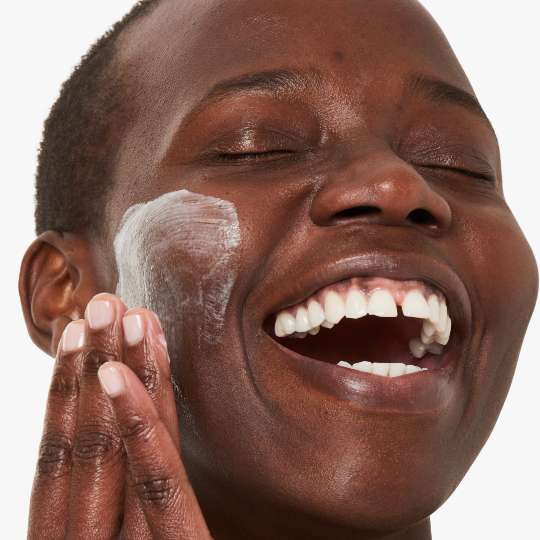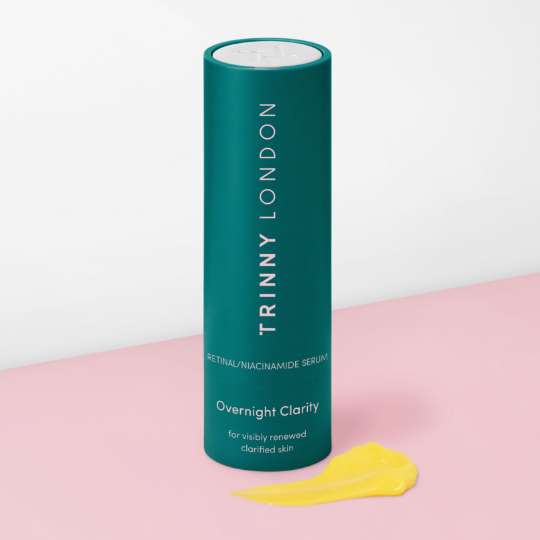

What is hyaluronic acid good for?
Does your skin feel tight? Thirsty? Are fine lines more prominent than they were previously? Sounds like your skin is suffering from dehydration. Enter hyaluronic acid, the hydration hero swooping in to flood skin with much-needed moisture. It’s part of a family of ingredients called humectants, which work by drawing water into the skin and holding onto it. Imagine it like a sponge, soaking up moisture. Without water, the sponge (much like our skin) is brittle and rough to the touch, but with water, it becomes soft, supple and plump. “Hyaluronic acid occurs naturally in our skin and draws water to the surface,” explains Consultant Dermatologist Dr Justine Hextall. “It will hold a thousand times its weight in water which is remarkable.”
Hyaluronic acid has the benefit of being compatible with all skin types, whether you’re dry, oily, combination or normal. It’s worth noting that dry skin is lacking in oil, not water, so this isn’t a quick fix for the associated roughness, itchiness or flaking. However, making sure that skin is well hydrated will go a long way to making it look fresher, and feel more comfortable. On the flip side, those with oily skin who might typically steer clear of moisture-loving ingredients can enjoy hyaluronic acid without worrying about driving grease in the skin. “Those where the skin barrier is compromised and losing moisture will see the greatest benefit from hyaluronic acid,” says Dr Hextall. “As we can lose up to 40% of our hyaluronic acid at the time of the menopause, its addition to your routine is particularly important. This would be one of my first recommendations if you’re looking to give skin back its glow.”
Can you use hyaluronic acid every day?
Is the word “acid” making you think of ingredients like alpha-hydroxy acids and retinoic acid? Don’t worry. Hyaluronic acid is acidic by name, but not by nature and won’t exfoliate the skin or supercharge its turnover. For this reason, it’s perfectly fine to use hyaluronic acid every day. “I would recommend using it once or twice a day,” says Dr Hextall. “I don’t think you can have too much of this active in my view, as long as it’s used alongside water-based emollients (ingredients that moisturise the skin).” For maximum plumping benefits, it’s best to use hyaluronic acid in a leave-on formula rather than a cleanser or mask. This will give it maximum opportunity to work its hydrating magic. You could even mix a hyaluronic acid serum with your foundation or tinted serum for an extra dewy base.
How to apply hyaluronic acid: Step-by-step
The only downside of hyaluronic acid is that it needs somewhere to draw moisture from. If there isn’t any water readily available, it may start to steal stocks from inside your skin. “Because hyaluronic acid draws moisture, some believe it can draw it directly from the skin which causes dehydration,” explains Dr Hextall. “I always recommend ideally applying hyaluronic acid serums over damp skin and locking in that moisture with a light, water-based emollient.” By adding extra water into the equation, you are effectively creating a moisture sandwich on the skin, giving it two avenues to draw moisture from. This isn’t a must-do, but might be a nice application technique if your skin is naturally very dry.
Here’s how to apply hyaluronic acid serum step-by-step.
Step 1
Cleanse your skin, and apply a liquid exfoliant if this is part of your routine. If it’s not, proceed straight from cleansing to your serum.
Step 2
Apply your hyaluronic acid serum, taking the time to massage it into the skin until fully absorbed.
Step 3
Top with a moisturiser to trap this important moisture in the skin.
Which ingredients can you layer hyaluronic acid with?
When it comes to playing nicely with other skincare ingredients, hyaluronic acid is something of a social butterfly. As it doesn’t have exfoliating properties, it pairs well with other actives – and can even support their effects. “A calm, hydrated skin barrier is the key to healthy skin, as less allergens and irritants can get in and less moisture can get out,” says Dr Hextall. Using hyaluronic acid will help to support the skin barrier and keep hydration levels topped up. “When our skin is healthy and hydrated it will tolerate actives more easily and treatments such as retinoids and exfoliants can be used at optimal concentration without irritation,” adds Dr Justine. Hyaluronic acid can be layered with vitamin C, with retinol and with niacinamide. Just consider the weight of your serums when layering, as you’ll need to work from lightest to heaviest to ensure everything can make its way to your skin.
Read, watch and be inspired...



